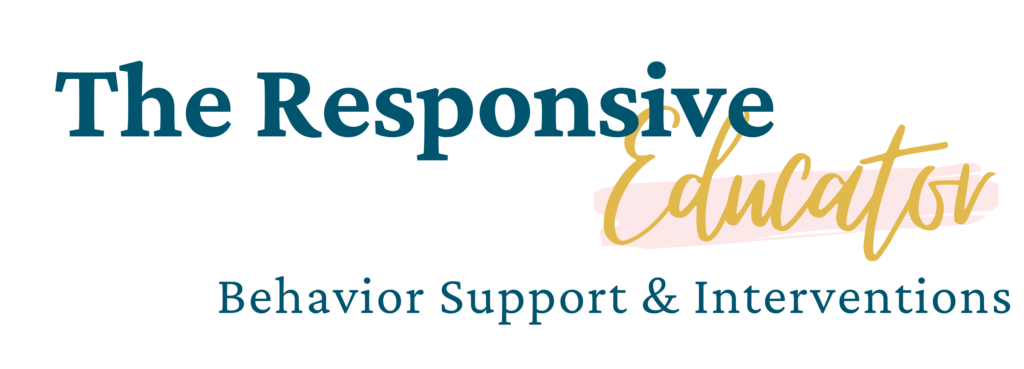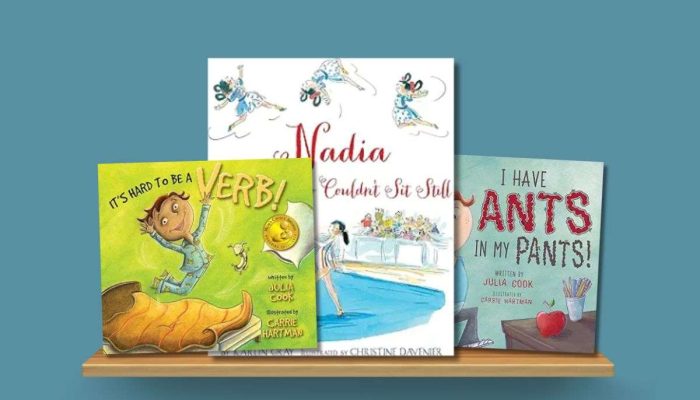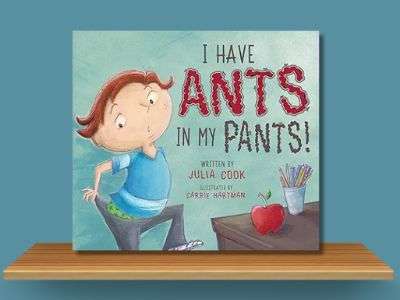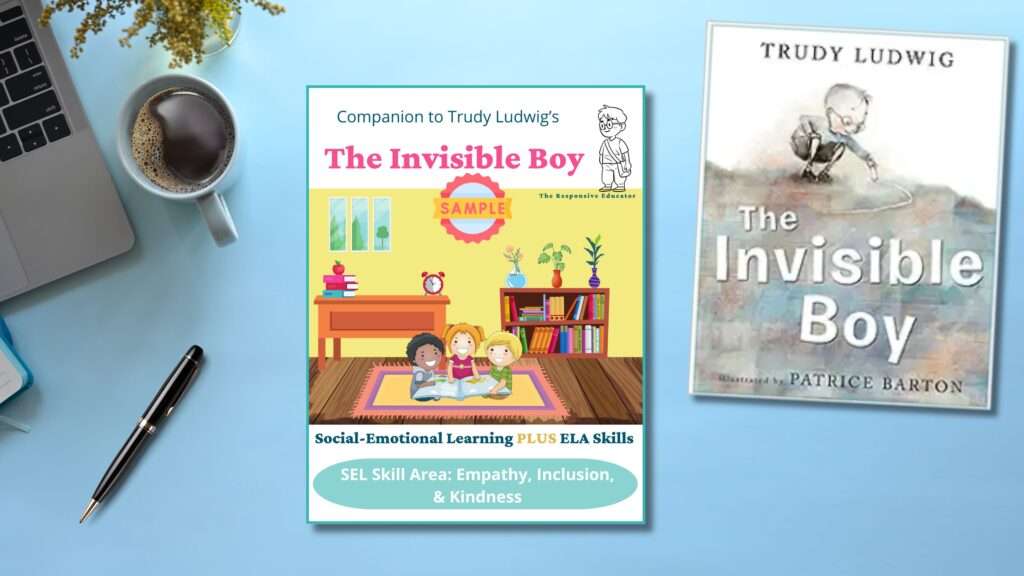


Helping children understand and manage ADHD is crucial for their development and well-being. The following ADHD books for kids are designed to provide practical strategies, relatable stories, and valuable insights for children, parents, and educators. These books aim to foster understanding, self-regulation, and coping skills in an engaging and supportive way. Whether you’re looking for a bedtime story that addresses hyperactivity or a classroom resource to teach self-control, this list has something for everyone.
These books are generally targeted at younger elementary-aged children but can also benefit slightly older children depending on their developmental stage and individual needs. While the suggested age ranges reflect the age at which a child may understand the content independently, these books can be valuable resources for children outside of the suggested range when used with guided instruction and discussion. They are particularly useful in classroom settings for discussions on managing ADHD symptoms, developing self-regulation, and understanding individual differences.
For some of the books on this site, I’ve created interactive read-alouds designed to enrich their use in the classroom. These resources include discussion questions, activities, and prompts that actively engage students and deepen their understanding of key themes. More interactive read-alouds are on the way! If there’s a specific book you’d like to see included, please reach out using the contact form at the bottom of the page.
For more insights on supporting social-emotional learning (SEL) and incorporating interactive read-alouds into your teaching, explore these posts:
(As an Amazon affiliate, I earn a small commission if you purchase products through the links on my posts. Thank you for your support!)
Summary: My Whirling Twirling Motor is a heartwarming story about Charlie, a boy who has a “whirling, twirling motor” inside of him that makes it difficult for him to stay still or focus. The book follows Charlie as he navigates his day with boundless energy, trying to manage his impulsive behaviors while also feeling misunderstood by those around him. The story provides insight into what it’s like for a child with ADHD, capturing both the challenges and the strengths that come with it.
Description: This picture book combines a relatable narrative with an empathetic portrayal of a child dealing with hyperactivity and impulsivity. Through Charlie’s story, readers get a glimpse into the experiences of children who have difficulty controlling their energy levels. The book is beautifully illustrated and written in a way that makes the emotions and struggles of the character accessible to young readers. My Whirling Twirling Motor is both a storybook and a teaching tool, offering children with ADHD a character they can identify with, while also educating parents, teachers, and peers about the condition in an engaging and compassionate way.
Reviews and Reflections: My Whirling Twirling Motor receives praise for its relatable portrayal of a child who struggles with hyperactivity. Many parents appreciate how the book normalizes ADHD-like behaviors, providing children with a character who feels understood. Readers find the book valuable for starting conversations about energy management and self-regulation. The gentle, positive tone makes it especially helpful for children who feel misunderstood or overwhelmed by their own energy levels, making it both educational and comforting.

Summary: I Have Ants in My Pants by Julia Cook addresses the challenges of restlessness and hyperactivity in young children. The story follows Louis, a young boy who struggles to sit still and focus, offering practical strategies for managing these behaviors.
Description: Louis is always wiggling and moving, which gets him into trouble at school and home. His mom teaches him the “Wiggle Dance” and other techniques to manage his restlessness. The book normalizes these feelings and provides tools for children to calm their wiggles and control their actions. It emphasizes understanding and managing one’s energy in a fun and relatable way. The book is especially useful for children who find it hard to sit still and need physical activity to help them focus.
Reviews and Considerations: I Have Ants in My Pants is lauded for its focus on impulse control and self-awareness, particularly for children who have difficulty staying still. Parents and educators note the book’s practical strategies for managing restlessness, making it especially useful for children with ADHD or similar challenges. The engaging narrative, paired with vibrant illustrations, effectively keeps children engaged while teaching them how to channel their energy appropriately. Reviewers appreciate how the book offers a balance of humor and valuable lessons about self-regulation.


Summary: It’s Hard to Be a Verb! by Julia Cook explores the challenges of hyperactivity and difficulty focusing. The story follows Louis as he learns to manage his behavior with the help of his mom.
Description: Louis’s hyperactivity makes it hard for him to focus, especially in quiet settings like the classroom or during activities requiring stillness. His mom teaches him strategies such as making lists, using fidget toys, and practicing mindfulness techniques to help him stay on task. The narrative offers practical tools to handle hyperactivity constructively, emphasizing self-regulation and coping strategies. The book is particularly focused on the cognitive and emotional aspects of hyperactivity, helping children understand and manage their impulses in various contexts.
Reviews and Reflections: It’s Hard to Be a Verb has received positive feedback for its relatable depiction of children who struggle with focus and hyperactivity. The character Louis finds it difficult to sit still and control his urge to move, which is something many children, especially those with ADHD, can identify with. The book uses humor and a relatable narrative to show how frustrating it can be for kids when they are constantly told to sit still or pay attention. However, the book also provides helpful strategies that children can use, such as Louis’s mother teaching him calming techniques like using a squishy toy or focusing exercises.
Reviewers particularly appreciate the book’s supportive tone, which encourages children to embrace who they are while learning to manage their behaviors. The story helps open conversations about ADHD without labeling it directly, making it accessible for a wide range of children. Parents and educators highlight the book’s usefulness in small group settings or one-on-one discussions, noting that it offers valuable tools for managing impulsivity in a way that is both empowering and non-judgmental
Help students manage their impulses with the It’s Hard to Be a Verb! Interactive Read Aloud Lesson Plan Book Companion, ELA, SEL Activities. This 96-page resource features over 40 activities, providing 15-20 hours of engaging lessons that seamlessly integrate social-emotional learning (SEL) and English Language Arts (ELA) skills.
Perfect for whole group, small group, and independent work, this comprehensive resource ensures that students develop essential skills in an interactive and supportive way. The lesson plan includes a variety of discussion questions, activities, and prompts designed to help students understand and manage hyperactivity and inattention, promoting self-regulation and coping strategies.

Summary: A Dragon with ADHD by Steve Herman is a children’s book designed to help kids understand and manage ADHD. The story follows a young dragon who struggles with staying focused and organized, providing relatable scenarios and practical strategies to help children cope with ADHD symptoms.
Description: This book is a traditional storybook with a strong teaching element. The young dragon’s experiences are crafted to help children recognize and understand their own challenges with ADHD. Through engaging illustrations and a supportive narrative, the book emphasizes the importance of organization, focus, and positive self-management techniques. The story provides tools and strategies for children to improve their focus and organization in a fun and relatable way.
Reviews and Reflections: Parents and educators appreciate A Dragon with ADHD for its relatable portrayal of ADHD behaviors. The book resonates with children who see themselves in Diggory Doo, the dragon, helping them feel understood and accepted. Many reviews highlight how this book serves as a valuable tool for explaining ADHD to young children in a positive, encouraging way. The coping strategies mentioned, like focusing and organizing, are helpful and accessible for kids. Parents also value how the book offers comfort and helps open conversations about ADHD and self-regulation.

Summary: Lacey Walker, Nonstop Talker is a fun and engaging story about a little owl named Lacey who loves to talk—so much so that she often forgets to listen. One day, Lacey loses her voice and, for the first time, experiences what it’s like to be quiet and listen to others. Through this experience, Lacey learns the value of listening and the importance of giving others a chance to speak.
Description: This picture book is both entertaining and educational, using Lacey’s situation to teach children about the importance of listening. The story is lighthearted, with colorful illustrations that bring Lacey’s world to life. While the book is designed to be an enjoyable read for young children, it also carries a valuable lesson about communication and respect for others. Lacey Walker, Nonstop Talker is a great resource for parents and teachers looking to instill good listening habits and to help children understand the balance between talking and listening in conversations.
Reviews and Considerations: Lacey Walker, Nonstop Talker has been widely praised for its relatable depiction of a young girl who loves to talk but learns the importance of listening when she loses her voice. Many parents and teachers find this book to be an engaging way to introduce children to the idea of balancing conversation with listening. The simple, humorous storyline effectively demonstrates the value of quiet reflection and paying attention to others.
Reviewers appreciate how the book’s approachable tone makes it easy for young children to understand the lesson. The colorful illustrations and lively characters keep readers engaged while delivering a meaningful message about self-awareness and communication skills. This book has been frequently recommended for classroom discussions and as a tool for teaching social-emotional skills to early elementary-aged children.

Summary: Train Your Dragon to Focus is a story about a young dragon named Diggory Doo who struggles with staying focused and paying attention. The book follows Diggory as he learns various strategies to improve his focus and concentration, helping him to complete tasks and stay on track. Through his journey, Diggory discovers that with practice and the right tools, he can overcome his challenges and become more attentive.
Description: This book is part of the popular dragon series by Steve Herman, aimed at teaching important life skills through the adventures of a lovable dragon. Train Your Dragon to Focus is designed to help children who struggle with attention and focus, offering practical tips and strategies in a fun and engaging way. The narrative is both entertaining and instructional, using the dragon’s experiences to make concepts like focusing, following instructions, and managing distractions relatable and easy to understand for young readers. The book is ideal for parents, teachers, and caregivers who want to introduce children to focus-building techniques in an accessible and enjoyable format.
Reviews and Reflections: Train Your Dragon to Focus has received positive feedback for its relatable story and practical advice. Reviewers often mention how the character of Diggory Doo helps children understand the challenges of maintaining focus and avoiding distractions. Many parents and educators appreciate the book for offering concrete strategies that kids can use, such as setting timers and keeping eye contact, which makes the lessons feel achievable. The book’s relatable scenarios, such as difficulties with school, sports, and chores, allow children to connect with Diggory Doo’s struggles and successes.
Readers also find that the lighthearted storytelling helps children feel less overwhelmed by their own challenges with focus and attention. Some reviewers, particularly parents of children with ADHD, have noted that while the book does not “fix” all focus-related issues, it helps children feel understood and gives them tools they can apply in their daily lives.

Summary: This Morning Sam Went to Mars by Nancy Carlson is a children’s book about a young boy named Sam who has a vivid imagination but struggles with attention issues. The story follows Sam as he learns various strategies to improve his focus and manage his powerful brain.
Description: Sam, an eight-year-old with a fantastical imagination, daydreams about exploring space, deep seas, and medieval castles. His imagination is powerful, but it often distracts him from schoolwork and tasks at home. With the help of his doctor and supportive adults, Sam is introduced to strategies to help him focus, such as staying organized, eating better, and asking for help when needed. Sam’s favorite strategy is making time to exercise his imagination in a structured way. The book combines engaging illustrations with practical advice, making it a useful tool for children who struggle with attention issues.
Reviews and Reflections: This Morning Sam Went to Mars is widely praised for its relatable portrayal of a child with focus and attention difficulties. The book follows eight-year-old Sam, whose vivid imagination often distracts him from tasks at school and home. Readers find the character’s struggles with paying attention to be both relatable and reassuring for children facing similar challenges.
Parents and educators appreciate how the book presents practical strategies for children to improve focus, such as staying organized, eating well, and asking for help. Sam’s journey also emphasizes the value of embracing creativity and imagination while learning to manage distractions in a productive way. The positive, gentle tone of the book helps children see that they can harness their “powerful brains” to succeed with a little guidance.



Summary: Nadia, The Girl Who Couldn’t Sit Still by Karlin Gray is an inspiring picture book biography that tells the true story of Nadia Comaneci, the legendary gymnast who became the first woman to score a perfect 10 in Olympic gymnastics. The book captures Nadia’s boundless energy, determination, and the journey that led her to become a world-renowned athlete.
Description: This book is a traditional storybook with a strong biographical and motivational element. It follows the life of young Nadia Comaneci, who couldn’t sit still and was always moving, flipping, and climbing. Her energy and passion for gymnastics eventually led her to compete in the Olympics, where she made history with her perfect scores. Through engaging illustrations and an inspiring narrative, the book emphasizes the importance of perseverance, dedication, and following one’s passion.
Reviews and Reflections: Nadia, The Girl Who Couldn’t Sit Still has been highly praised for its lively depiction of Nadia Comaneci’s journey from an energetic, restless child in Romania to an Olympic gold medalist. Reviewers appreciate how the book captures the energy and determination of a young girl who channels her restlessness into a positive outlet through gymnastics. Parents and educators note how the story serves as a great example for children who may struggle with sitting still or focusing, showing them that their energy can be used in a productive way.
The vibrant illustrations and engaging storytelling are often highlighted, making the book enjoyable for young readers. The story not only celebrates Comaneci’s accomplishments but also emphasizes themes of perseverance, resilience, and the importance of not giving up when faced with challenges.


Summary: Mrs. Gorski, I Think I Have the Wiggle Fidgets by Barbara Esham is a children’s book that addresses the challenges of ADHD through the story of David, a young boy who struggles with staying focused in class. The book provides practical strategies and encourages creative problem-solving to help manage symptoms of ADHD.
Description: This story is part of the Adventures of Everyday Geniuses series and is designed to help children understand and cope with the symptoms of ADHD. David frequently gets scolded by his teacher, Mrs. Gorski, for not paying attention. However, after making a big mistake, he decides to come up with his own plan to manage his “wiggle fidgets.” The book is written in a relatable, empowering manner, showing how David brainstorms solutions like using fidget toys and attention cue cards. The narrative highlights the strengths and challenges associated with ADHD, making it a valuable resource for children, parents, and educators.
Reviews and Reflections: Reviewers appreciate how the book not only addresses David’s fidgeting but also involves him in finding creative solutions to his problem. By sharing his strategies with his teacher and classmates, David’s journey is both empowering and constructive.
The illustrations by Mike and Carl Gordon are vibrant and engaging, adding humor and life to the narrative. Educators and parents commend the book for its positive message, showing that kids with attention challenges can overcome obstacles with a little creativity and support. Overall, Mrs. Gorski, I Think I Have the Wiggle Fidgets is seen as a great resource for teaching children about self-regulation and problem-solving in a way that is encouraging and approachable for young readers.

Summary: My Brain is a Race Car by Nell Harris is a children’s book designed to help kids understand a neurodivergent brain. Inspired by the author’s own experiences with ADHD and Autism, the story provides a simple yet effective explanation of how brains function differently and the importance of self-regulation.
Description: The book uses the metaphor of a race car to explain the workings of a neurodivergent brain. It covers common traits associated with ADHD and Autism, and gives examples of self-regulation tools that children can use to manage their behavior. The narrative avoids complex jargon, making it accessible for young readers. It aims to serve as a conversation starter between adults and children, fostering discussions about individual needs and strategies to manage and support these needs.
Reviews and Reflections: My Brain is a Race Car has garnered praise for its creative and child-friendly analogy of a brain being like a race car—constantly moving, in need of the right fuel, and requiring breaks to stay on track. Parents and educators appreciate how the book explains ADHD and other forms of neurodivergence in a way that children can easily understand and relate to. The colorful illustrations and rhyming structure make the concepts engaging for young readers.
Many reviewers highlight the effectiveness of the race car analogy, noting that it helps children recognize their own behaviors and emotions. For instance, children with ADHD often saw themselves in the book, finding comfort in realizing that they are not alone in their experiences. Parents also value the tips and suggestions provided for managing focus and energy, making it a useful tool for guiding children toward better self-regulation.
While the book primarily focuses on ADHD, reviewers have noted that it can apply to a range of neurodivergent experiences, including autism and anxiety. However, a few readers expressed concerns about the page discussing food choices, which might not be relatable for all children, especially those with sensory aversions. Overall, the book is praised for its positive tone and ability to validate and normalize the experiences of children with fast-paced, neurodivergent brains.

Summary: Pause Power is a story that introduces children to the concept of self-regulation by teaching them the importance of pausing before reacting. The book follows a young character who learns that taking a moment to pause before responding to situations helps them make better decisions, control their impulses, and handle emotions more effectively.
Description: This book is designed as a teaching resource to help children develop self-regulation skills. Through an engaging narrative, Pause Power illustrates how taking a brief pause can lead to more thoughtful and constructive reactions, whether dealing with frustration, excitement, or anger. The story is accompanied by vibrant illustrations that capture the attention of young readers, making the lesson of pausing both memorable and practical. Pause Power is an excellent tool for parents, teachers, and caregivers who want to introduce children to the idea of self-control and the benefits of thinking before acting.
Reviews and Reflections: Pause Power is highly praised by parents, educators, and therapists for teaching children effective ways to manage their emotions and improve impulse control. Readers appreciate how the book provides children with simple, practical techniques, like breathing and counting, to help them pause before reacting when they feel their “buttons” are being pushed. Many find it particularly useful for children who struggle with emotional regulation, praising the engaging illustrations and culturally inclusive narrative. The book is often recommended for both home and classroom use, offering concrete, actionable advice for emotional self-regulation.

Summary: Fix It With Focus follows the story of Blake, a young boy who struggles with staying focused and easily gets distracted from his tasks. Throughout the book, Blake learns strategies to ignore distractions and improve his concentration, helping him stay on-task and complete his responsibilities. The story emphasizes the importance of focus and provides practical tips for children who face similar challenges.
Description: This book is part of Bryan Smith’s “Executive Function” series, which focuses on teaching children essential life skills. Fix It With Focus is both a storybook and a teaching tool, offering a relatable narrative that addresses common distractions and provides strategies for maintaining focus. The book uses Blake’s experiences to teach children how to manage distractions and stay on-task, making it a valuable resource for parents, educators, and caregivers who want to help children develop better concentration skills. The illustrations and simple, engaging text make it easy for young readers to connect with Blake’s journey and apply the lessons in their own lives.
Reviews and Reflections: Fix It with Focus is part of Bryan Smith’s popular Executive Function series, which aims to teach children essential life skills such as focusing, self-monitoring, and managing distractions. This book follows Blake, a boy who constantly struggles with staying on task. Whether it’s getting distracted during school projects or losing focus while playing sports, Blake’s challenges are relatable for many young readers.
The book offers practical strategies for improving focus, such as taking brain breaks and using physical tools like a squishy eraser. Parents and educators appreciate how the story is both engaging and instructional, making it easy for children to grasp the concept of regaining focus. Many reviewers find the book helpful for children in grades K-5, particularly those with ADHD or similar attention challenges. The illustrations, relatable story, and tips provided at the end for teachers and parents are consistently praised for their effectiveness in encouraging better focus and self-control in children.

Summary: What Were You Thinking? Learning to Control Your Impulses tells the story of Braden, a young boy who often acts without thinking and finds himself in trouble because of it. Through various situations, Braden learns the importance of controlling his impulses, thinking before acting, and understanding the consequences of his actions. The book provides practical strategies for children to help them pause and make better choices.
Description: This book is part of Bryan Smith’s “Executive Function” series, aimed at helping children develop essential life skills. What Were You Thinking? is both an engaging story and a teaching resource, focusing on the importance of impulse control. The narrative follows Braden as he navigates everyday situations where his impulsive actions lead to unintended consequences. With relatable examples and straightforward language, the book teaches children how to recognize when they’re about to act impulsively and how to stop and think before they act. The colorful illustrations and accessible text make the lessons easy for young readers to understand and apply in their own lives.
Reviews and Considerations: The book is well-regarded for its clear and relatable approach to teaching impulse control. Parents and educators appreciate how the story provides practical, easy-to-understand strategies for children who struggle with impulsive behavior. The engaging storyline and helpful tips make it a valuable tool for teaching self-control in both home and classroom settings.

Sign up now to receive a free sample of “The Invisible Boy” Interactive Read-Aloud Lesson Plan! This comprehensive resource includes engaging activities designed to help your students develop empathy and inclusion.
By signing up, you will also join our newsletter, where you’ll receive:
Join our community of educators dedicated to fostering social-emotional growth in the classroom!

( ) = Coming Soon
Body Safety & Personal Boundaries
(Conflict Resolution)
(Compromise / Cooperating)
Feelings & Emotional Awareness
(Kindness & Generosity)
(Mindfulness)
(Peer Influence)
(Perseverance)
(Sensory Processing)
(Sharing)
(Speaking Politely)
(Teasing & Bullying)
(Trauma Recovery)